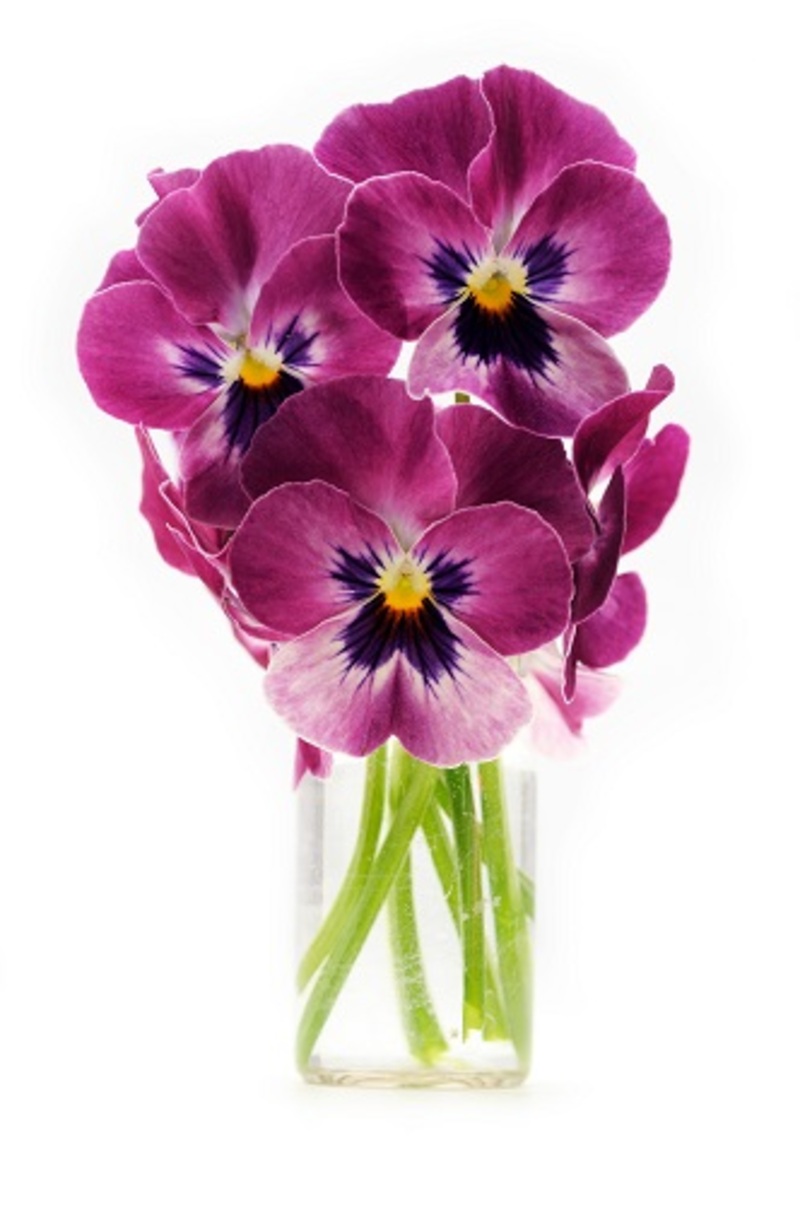A Beginner's Guide to Caring for Hydrangeas at Home
Hydrangeas are among the most beautiful and versatile flowering shrubs you can grow in your garden. With their stunning blooms and vibrant foliage, they bring a burst of color and charm to any landscape. If you are new to gardening or simply want to start growing hydrangeas at home, this comprehensive guide will walk you through everything you need to know. Learn essential tips and proven techniques for hydrangea care so you can confidently nurture these amazing plants and enjoy their dazzling flowers for years to come.
Understanding Hydrangeas: An Introduction
Before diving into the details of hydrangea care for beginners, it is important to get to know a bit more about these enchanting plants. Hydrangeas belong to the genus Hydrangea and come in several charming species and varieties, each offering unique flower shapes, sizes, and colors.
Popular Types of Hydrangeas
- Bigleaf Hydrangea (Hydrangea macrophylla): Known for their large, round flower heads and the ability to change color based on the soil's pH.
- Panicled Hydrangea (Hydrangea paniculata): Features cone-shaped clusters of flowers, often turning from white to pink as they mature.
- Smooth Hydrangea (Hydrangea arborescens): Famous for the 'Annabelle' variety with globe-like white blooms.
- Oakleaf Hydrangea (Hydrangea quercifolia): Distinctive oak-shaped leaves and cone-shaped flowers, often sporting vibrant fall foliage.
Whether you choose hydrangea shrubs for your borders, as garden centerpieces, or even for container gardening, understanding their basic needs will help you achieve dazzling growth and blooming success.

Choosing the Perfect Spot for Your Hydrangeas
One of the first and most important decisions for successful hydrangea care at home is selecting the right location. These plants have specific lighting and soil requirements to thrive and bloom at their best.
Light Requirements
- Partial Shade: Most hydrangeas prefer morning sun and afternoon shade, especially in hotter climates. Too much direct sunlight can scorch the leaves and limit blooming.
- Filtered Light: In areas with more intense sunlight, growing hydrangeas in spots with dappled shade is ideal.
- Tailored Needs: Panicle and smooth hydrangeas can tolerate a bit more sun, while bigleaf and oakleaf hydrangeas do best with protection during peak afternoon heat.
Soil Preferences
Hydrangeas love rich, well-draining soil enriched with organic matter. The pH of your soil can also influence bloom color for certain types, making soil preparation an exciting and important step.
- Soil pH and Color: For bigleaf hydrangeas, acidic soil (pH below 6) tends to produce blue flowers, while alkaline soil (pH above 7) encourages pink blooms.
- Amendments: Add compost or aged manure to improve soil fertility and drainage, ensuring strong root development.
- Moisture: Make sure the planting area is well-drained, as waterlogged soil can lead to root rot.
Planting Hydrangeas: Step-by-Step Guide
Proper planting is the cornerstone of healthy at-home hydrangea care. Follow these steps to give your hydrangea bushes the best possible start:
- Choose the Right Time: The best time to plant hydrangeas is in the spring or fall when temperatures are mild.
- Prepare the Planting Hole: Dig a hole two to three times the width of the root ball but no deeper than the root ball itself.
- Amend the Soil: Mix in plenty of compost or organic matter to enhance nutrients and improve drainage.
- Remove the Plant Carefully: Gently loosen the hydrangea from its container and tease out any tightly bound roots.
- Position the Hydrangea: Place the plant in the hole so that the top of the root ball is level with or slightly above the existing soil line.
- Backfill and Water: Fill in the soil around the root ball, firming it gently, then water thoroughly to help settle the plant.
- Mulch: Apply a 2-3 inch layer of organic mulch to conserve moisture, moderate soil temperature, and prevent weeds.
Essential Hydrangea Care Tips for Beginners
Now that your hydrangeas are in the ground, ongoing care is key to keeping them healthy and blooming. This section covers the core aspects of hydrangea maintenance:
Watering Hydrangeas
- Regular Moisture: Hydrangeas need consistently moist soil, especially during the first couple of years as they establish roots.
- Avoid Overwatering: Too much moisture can cause root rot; ensure soil drains well.
- Deep Watering: Water thoroughly 1-2 times per week rather than light, frequent watering, especially during dry spells.
- Mulch Benefits: Mulching helps retain soil moisture and keeps roots cool during hot weather.
Fertilizing Hydrangeas at Home
- Timing: Feed hydrangeas in early spring as new growth emerges and again in early summer if desired.
- Type: Use a balanced, slow-release fertilizer formulated for flowering shrubs.
- Caution: Avoid over-feeding as this can result in lush leaves but fewer blooms.
- Soil Tests: Consider a soil test - especially if you wish to adjust bloom color for bigleaf hydrangeas.
Pruning Hydrangeas: When and How
Correct pruning is crucial for keeping your hydrangea flowers abundant and the plant healthy. Understanding when and how to prune depends on the hydrangea variety:
- Bigleaf and Oakleaf Hydrangeas: Blooms form on old wood (last year's growth). Prune after flowering but before the end of summer, removing only spent blooms and weak or damaged stems.
- Panicle and Smooth Hydrangeas: Bloom on new wood (current year's growth). Prune back in late winter or early spring before new growth appears for a refreshed shape and more blooms.
Changing Hydrangea Bloom Color
For bigleaf hydrangeas, you can actually change the flower color by altering soil pH. This is a fun aspect for beginner hydrangea gardeners to experiment with!
- To Turn Flowers Blue: Lower the soil's pH by adding sulfur or aluminum sulfate.
- To Make Flowers Pink: Raise the soil's pH by adding lime (garden lime or dolomitic lime).
- Patience Required: Color changes can take weeks or even a full season, so regular soil testing is recommended.
Hydrangeas in Containers
If you have limited space or want to add hydrangeas to your patio, container gardening is a great option:
- Pot Size: Use large containers with drainage holes to prevent excess water buildup.
- Potting Mix: Opt for a high-quality, moisture-retentive potting mix for best results.
- Watering: Keep a closer eye on moisture, as potted hydrangeas can dry out quickly, especially in warm weather.
- Winter Care: Move containers to a sheltered spot if you experience harsh winters, or insulate pots with straw or burlap.
Common Hydrangea Problems & How to Solve Them
Like all garden plants, hydrangeas can be subject to pests and diseases. Healthy plants are less likely to encounter issues, but staying vigilant will help you act quickly if something goes wrong.
Pests Affecting Hydrangeas
- Aphids: These small insects cluster on new growth and flower buds, causing distortion. Spray them off with a hose or use insecticidal soap.
- Spider Mites: Look for tiny webs and speckled leaves; increase humidity and treat with horticultural oil if needed.
- Slugs and Snails: These are especially problematic for young plants. Use slug pellets or hand-pick them in the evening.
Hydrangea Diseases
- Powdery Mildew: Appears as a white, powdery coating on leaves; improve air circulation and remove affected material promptly.
- Leaf Spot: Fungal or bacterial, causing brown spots; clean up fallen leaves and apply fungicide if needed.
- Root Rot: Overly wet soil is the main cause; ensure proper drainage and avoid overwatering.
Maintaining good garden hygiene and appropriate cultural practices are your best defenses against pests and diseases.
Hydrangea Winter Care
Winter can be tough on hydrangeas, especially in colder climates. While some types are more cold-hardy, providing winter protection helps them survive and thrive:
- Mulch roots generously in late fall with 4-6 inches of straw, pine needles, or shredded bark.
- For bigleaf and oakleaf hydrangeas, consider wrapping the plant with burlap or covering with a wire frame topped with mulch.
- Container hydrangeas should be moved into sheltered spaces or insulated against freezing temperatures.

Frequently Asked Questions about Hydrangea Care
Why aren't my hydrangeas blooming?
- Incorrect pruning (removing flower buds)
- Insufficient sunlight
- Over-fertilization with high-nitrogen fertilizers
- Damage from late spring frosts
Can hydrangeas grow indoors?
Hydrangeas are best grown outdoors, as they need plenty of light and air circulation. However, small potted hydrangeas can thrive temporarily indoors in bright, indirect light with regular watering.
How long do hydrangeas live?
With proper care, hydrangeas can live and bloom for decades, making them a timeless addition to any garden.
Conclusion: Enjoy Beautiful Blooms Year After Year
Whether you are planting your first hydrangea or looking to polish your green thumb, learning how to care for hydrangeas at home is both rewarding and enjoyable. With the right site, well-prepared soil, thoughtful watering, and a little seasonal maintenance, your hydrangea shrubs will reward you with lush foliage and spectacular blooms year after year. Start your hydrangea gardening journey today and transform your garden into a floral paradise!
Happy gardening!
